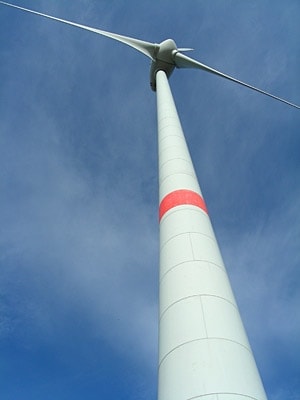Travelling is always exciting when one sees new places, meets new people, gets to know different histories and cultures. Have you ever looked at a country, region or city from an environmentalist’s side? Have you ever tried to see, say, how a windmill works instead of climbing the Eiffel Tower? I have. It happened to me for the first time when I went to East Germany with a team of Belarusian journalists.
In spite of autumn Berlin met us with almost vernal sunshine. Looking at the trees, still green, it seemed that autumn did not yet get to these places. The German capital is quite a green city. With its spacious streets and abundance of trees Berlin looks much like Minsk. Now I understand that it is not a coincidence that one of Berlin’s boroughs, Hellersdorf, is twinned with Minsk’s Partizan district.
Another similarity to Belarus is their tradition to hold competitions for the most comfortable patio. According to Ulrich Novikov, a spokesman of the Green League Berlin Land Union, the contest has been held annually in the past 15 years.
The topic of housing in East Germany viewed from the ecological perspective is quite interesting. For example, they have been concerned with energy saving issues for more than 15 years. According to Ralph Protz, a representative of a community service in Berlin, they completed energy rehabilitation of the residential buildings in the mid 1990s. “It was done in the shortest possible time and owners did not have to move away from their apartments. A riser block of flats would be repaired in 5 days. 270,000 apartments were subject to renovation that cost 8 million euros,” he explained. Because housing is mainly municipal in Berlin, it was cooperatives and municipal services who paid for the reconstruction. As a result, energy consumption was reduced to 61 kW/h per square meter.
Looking at the landscapes through the minibus window, you start thinking that the nature knows no borders. The scenery in one of Berlin suburbs resembled those in Belarus. Only numerous windmills reminded us that we were far from home. Germany is one of the major countries extensively using renewable sources of energy. More than 400,000 people work in this field. Wind energy accounts for 70-80 percent of the total energy production and this number is expected to grow.
Although wind turbines are ubiquitous in Germany, not all Germans are big fans of them. Still, there is room for compromise. An example is Feldheim, an ecological village located near 43 wind turbines with a capacity of 74 megawatts.
About three thousand people visit Feldheim every year. Guests come from all over the world. What are they so interested in? Perhaps, in the fact that the village uses green energy only. In windless weather or when energy consumption exceeds production, extra energy is generated by a biogas plant that is fired with corn and pig farm wastes. The project is beneficial economically, too, as it provided 22 new jobs in the settlement. This is not the only thing that benefits Feldheim. Locals own a windmill, and the generated energy is supplied to the general power grid bringing dividends to the residents. Also, they buy energy at the price almost three times as cheap as Berliners.











